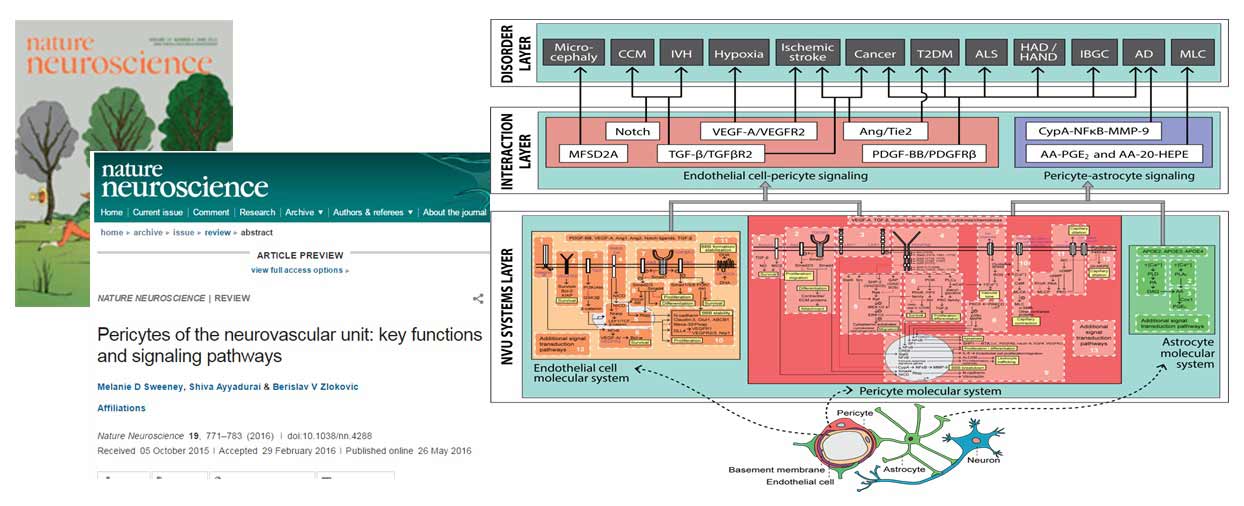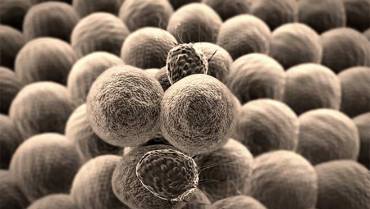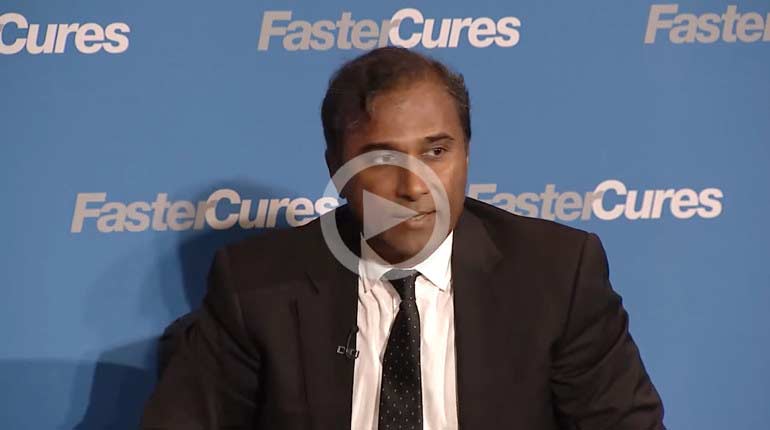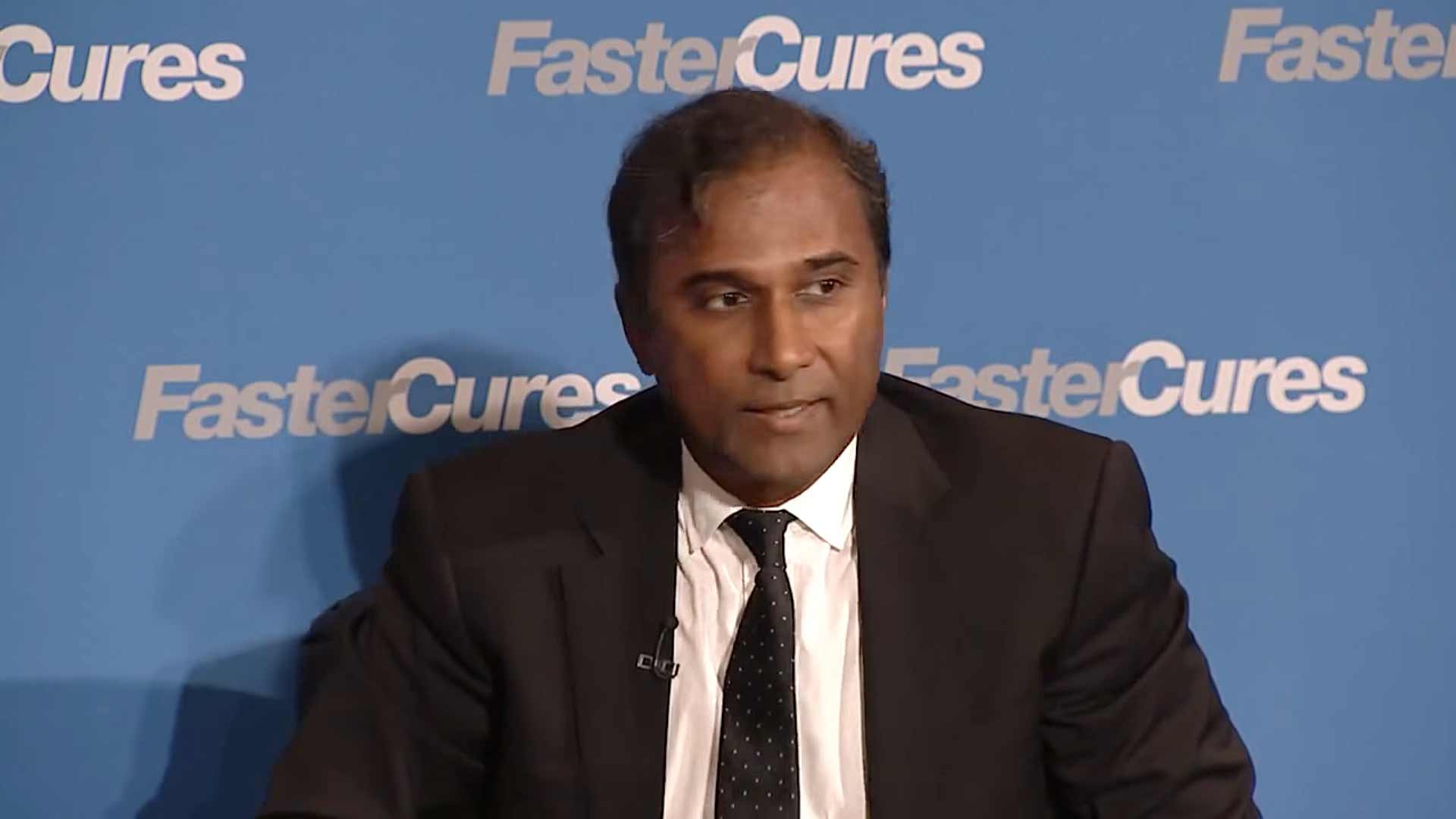Enabling Our Partners to Innovate 21st Century Solutions, Now!
Target Identification and Validation
Target identification is a key step in drug development. Based on systematic literature review in disease, targets are identified from a cell or microenvironment. Differential sensitivity of individual drugs and molecular targets in computational models are validated with in vivo and in vitro experimental data from the literature repository. Finally, validated computational models could be set as an initiative to eradicate repetitive wet lab experiments. Target identification and validation would be concurrently used to test the combination of different drugs.
CYTOSOLVE CASE STUDY: Alnylam – Multi-Combination Therapeutic for Hereditary Angioedema
 Alnylam is a leading pharmaceutical company, focusing their research on RNAi therapeutics for HAE (Hereditary angioedema). Angioedema is a non-itchy, pale swelling of subcutaneous or submucosal tissue that tends to recur chronically. HAE is characterized by the functional defect of factor XII or C1INH, which increases bradykinin production leading to vascular permeability. The siRNA therapeutics for serious, life-threatening HAE are restricted to limited patients and their caregivers. Efficient siRNA therapy for targeting genes related to HAE are limited due to the lack in correlation of different biomolecules in contact activation pathway. Alnylam collaborates with CytoSolve to explore the relationship between target knockdown and response for relevant genes. CytoSolve transformed the molecular pathways of contact activation and bradykinin production into in silico models. Differential sensitivity of bradykinin production and other simulation results are validated with in vivo and in vitro experimental data from the literature. The mechanistic in silico model then was able to predict the results from Alnylam’s in vivo studies. This validated computational models could be set as an initiative to further examine the combination of different siRNA.
Alnylam is a leading pharmaceutical company, focusing their research on RNAi therapeutics for HAE (Hereditary angioedema). Angioedema is a non-itchy, pale swelling of subcutaneous or submucosal tissue that tends to recur chronically. HAE is characterized by the functional defect of factor XII or C1INH, which increases bradykinin production leading to vascular permeability. The siRNA therapeutics for serious, life-threatening HAE are restricted to limited patients and their caregivers. Efficient siRNA therapy for targeting genes related to HAE are limited due to the lack in correlation of different biomolecules in contact activation pathway. Alnylam collaborates with CytoSolve to explore the relationship between target knockdown and response for relevant genes. CytoSolve transformed the molecular pathways of contact activation and bradykinin production into in silico models. Differential sensitivity of bradykinin production and other simulation results are validated with in vivo and in vitro experimental data from the literature. The mechanistic in silico model then was able to predict the results from Alnylam’s in vivo studies. This validated computational models could be set as an initiative to further examine the combination of different siRNA.
Drug Repurposing
Discoveries about the molecular basis of disease provide unprecedented opportunities to find new medicines. Discovery and formulation of new drug takes more than 14 years due to different barriers in clinical trials. Side effect of a drug on a particular disease could be studied and used as an initiative to repurpose the drug against disease with different therapeutics in combinations.
CYTOSOLVE CASE STUDY: FDA
 Discoveries about the molecular basis of disease provide unprecedented opportunities to find new medicines. Discovery and formulation of new drug takes more than 14 years due to different barriers in clinical trials. Side effect of a drug on a particular disease could be studied and used as an initiative to repurpose the drug against disease with different therapeutics in combinations.
Discoveries about the molecular basis of disease provide unprecedented opportunities to find new medicines. Discovery and formulation of new drug takes more than 14 years due to different barriers in clinical trials. Side effect of a drug on a particular disease could be studied and used as an initiative to repurpose the drug against disease with different therapeutics in combinations.
In 2012, a Nature Biotech review article promoted the use of multi-combination therapies to treat cancer in the post-genomic era and cited that CytoSolve®, the core technology behind PancreaSolve, as the only computational biology tool that can handle such complexity. In 2013, a multi-combination drug for pancreatic cancer was developed by using the CytoSolve platform which received FDA allowance to proceed to clinical trials in a record 11 months. PancreaSolve has exclusive license to use the CytoSolve pancreatic cancer models to develop new therapeutic combinations.
Combination Therapeutics
Therapeutic compounds exert their beneficial effects through their action on specific molecular targets. Theoretically, a combination of compounds may exhibit more potent effects than each of the compounds in isolation. This could be due to their synergistic effect on a single molecular target, or due to their actions on multiple targets, leading to beneficial effects. Integrative computational modeling assisted by the CytoSolve approach helps observe the effects of various combinations of two or more compounds on one or more biological cascades implicated in diseased states, through different targets. An added advantage is the reduction in the number of laboratory experiments required to be carried out for identification of combinatorial effects.
CYTOSOLVE CASE STUDY: MD Anderson – Multi-Combination Therapeutic for Pancreatic Cancer
Pancreatic adenocarcinoma is an aggressive cancer, which develops without prominent symptoms. The intense knowledge on cellular and molecular mechanisms of pancreatic adenocarcinoma is required for early detection strategies, preventive measures, and effective interventions. Single therapeutic drug like gemcitabine, approved by FDA against pancreatic cancer is required at higher dose to show minimal effect with higher toxicity. Hence, recent research have focussed on identifying the combination of drugs with maximum effect on minimal dose against cancer. Minimum of 10 to 15 years of research is required, to identify a combination of two effective drugs against cancer. Thus, in order to gain mechanistic insights of drug combinations, mathematical models of EGFR (growth factor) induced cell cycle and apoptosis were constructed to represent the overall framework of pancreatic cancer. CytoSolve created Cyto-001, an in silico combination of two FDA-approved chemotherapeutic agents to measure the number of apoptotic cells minimizing cancer cell proliferation. Novel combination of two drugs – Cyto-001 for pancreatic cancer are approved by FDA for further clinical trials. This resulted in the development of a new joint venture with MD Anderson Cancer Center. Combination of two drugs are planned to be tested as second line treatment for patients with metastatic, gemcitabine-refractory pancreatic cancer, or as an alternative to gemcitabine as a first-line treatment for patients with unresectable, advanced and metastatic pancreatic cancer. In addition, CytoSolve employed the individual and combination effect of active ingredients from different nutraceuticals.
CYTOSOLVE CASE STUDY: One Of The Largest Aromatherapy Companies
Several clinical and animal studies have shown that bioactive compounds in cinnamon either as whole cinnamon or cinnamon extract affect blood glucose and insulin signaling. However, the molecular mechanistic understanding of the effect of bioactive compounds in cinnamon extracts such as cinnamon bark oil, individually and in combination are not fully elucidated. In this study, a systematic literature review is conducted to identify the molecular pathways affecting glucose metabolism. The molecular pathways of glucose metabolism are converted to individual mathematical models, each model is validated, and the plurality of models are integrated with the CytoSolve® computational systems biology platform to produce an integrative model of glucose metabolism. CytoSolve provides for the dynamic integration of molecular pathway models in silico (through mathematical modeling on a computer), to understand synergistic effects of multi-ingredient natural products on molecular pathways of biological processes. Combination of all the bioactive molecules at the recommended dose levels in cinnamon bark oil is tested in silico. The results from the systematic review reveal three major biological systems that govern glucose metabolism: 1) Glut-4 translocation; 2) Inflammation; and, 3) Glucose conversion by α-Glucosidase. The results from the CytoSolve in silico modeling demonstrate that cinnamon bark oil bioactive compounds synergistically enhance glucose metabolism by increasing Glut-4 translocation, reducing inflammation, and inhibiting glucose conversion by α-Glucosidase.
Biomarker Discovery and Validation
Biomarker is a measurable marker in biological state or disease condition, involving multiple signaling and genetic pathways activated by diverse humoral and biomechanical stimuli. Systematic literature review on ensemble of signaling pathways are required to acquire thorough understanding on diverse responses of biomarkers. Different signaling pathways are transformed into individual computational models. Using CytoSolve scalability, the computational models are integrated to predict cellular responses in physiological or pathophysiological condition. Sensitivity on biomarkers on different time scales are validated with in vitro or in vivo literature from repository. Biomarker discovery and validation enable simulation of complex problems involving many parallel pathways that cannot be readily isolated experimentally.
CYTOSOLVE CASE STUDY: MIT
 Humans were initially considered to possess a different number of genes when compared to a worm. However, during the human genome project, it was realized that humans have the same number of genes as a worm. Biology now recognizes that we cannot consider the human being to be made of just genes, but factors other than genes decides human physiology and disease conditions. These factors could range anything from thoughts, food or lifestyle, giving rise to a thinking based on systems biology. This sheds light on the concept of ‘wholism’, the basis for traditional Indian systems of medicine such as Siddha and Ayurveda. Creating mathematical model of the cell is an effective way of bringing wholism to Western medicine. This involves performing complex integrations of molecular pathway models, generally considered tedious and time-consuming. Various software systems exist for this purpose, however, the approaches used so far do not provide a scalable method to integrate multiple biological pathways to model the whole cell. Dr. VA Shiva Ayyadurai, during his research time at MIT, developed CytoSolve, a scalable architecture for integrating biological pathways. Its key features include an infrastructure that provides simple communications interface to each model, is distributed, Web-enabled, and automatically aggregates the models to build the integrated model. Dr. Shiva Ayyadurai validated CytoSolve by comparing the integrated results of the EGFR pathway with the monolithic model of EGFR generated by CellDesigner, a popular tool for building computational molecular pathway models. The results demonstrated the viability of the CytoSolve approach, which can now provide a basis for using computational methods to solve challenges in medical research.
Humans were initially considered to possess a different number of genes when compared to a worm. However, during the human genome project, it was realized that humans have the same number of genes as a worm. Biology now recognizes that we cannot consider the human being to be made of just genes, but factors other than genes decides human physiology and disease conditions. These factors could range anything from thoughts, food or lifestyle, giving rise to a thinking based on systems biology. This sheds light on the concept of ‘wholism’, the basis for traditional Indian systems of medicine such as Siddha and Ayurveda. Creating mathematical model of the cell is an effective way of bringing wholism to Western medicine. This involves performing complex integrations of molecular pathway models, generally considered tedious and time-consuming. Various software systems exist for this purpose, however, the approaches used so far do not provide a scalable method to integrate multiple biological pathways to model the whole cell. Dr. VA Shiva Ayyadurai, during his research time at MIT, developed CytoSolve, a scalable architecture for integrating biological pathways. Its key features include an infrastructure that provides simple communications interface to each model, is distributed, Web-enabled, and automatically aggregates the models to build the integrated model. Dr. Shiva Ayyadurai validated CytoSolve by comparing the integrated results of the EGFR pathway with the monolithic model of EGFR generated by CellDesigner, a popular tool for building computational molecular pathway models. The results demonstrated the viability of the CytoSolve approach, which can now provide a basis for using computational methods to solve challenges in medical research.
Efficacy Analysis of Supplements
Dietary supplements contain different active ingredients, and enzymes. Effect of each ingredient and enzymes on different molecular cascades are identified through systematic literature review. Individual effect of ingredients and enzymes on different signaling pathways are transformed into computational models. Using CytoSolve platform, the additive or synergistic effect of the active ingredients are calculated for different dose of food supplements.
CYTOSOLVE CASE STUDY: VASHIVA Systems Health
 Computational modeling of signaling pathways is an approach at CytoSolve that provides insight into various physiological processes. Memory and cognition are fascinating processes in human behavior. Understanding the molecular mechanisms involved in these processes paves the way for development of strategies for memory enhancement. The CytoSolve approach in this direction involves the transformation of signaling pathways in learning and memory into computational models. The impact of nutraceuticals on the backbone models could be tested with the help of CytoSolve scalability approach. The ultimate aim is to formulate optimized nutraceutical combinations for the enhancement of memory and cognition.
Computational modeling of signaling pathways is an approach at CytoSolve that provides insight into various physiological processes. Memory and cognition are fascinating processes in human behavior. Understanding the molecular mechanisms involved in these processes paves the way for development of strategies for memory enhancement. The CytoSolve approach in this direction involves the transformation of signaling pathways in learning and memory into computational models. The impact of nutraceuticals on the backbone models could be tested with the help of CytoSolve scalability approach. The ultimate aim is to formulate optimized nutraceutical combinations for the enhancement of memory and cognition.
CYTOSOLVE CASE STUDY: Solid Gold® Pet Food
 There is a body of empirical evidence demonstrating the positive effect of dietary supplement Solid Gold® SeaMeal™ on coat appearance of pets. However, the molecular mechanistic understanding of the effect of SeaMeal ingredients, individually and in combination is not clearly understood. In this study, a systematic literature review is conducted to identify the molecular pathways affecting pet coat appearance. The molecular pathways of coat appearance are converted to individual mathematical models; each model is validated; and, the plurality of models is integrated with the CytoSolve® computational systems biology platform to produce an integrative model of coat appearance. CytoSolve provides for the dynamic integration of molecular pathway models, in silico, to understand synergistic effects of multi-ingredient dietary supplements on molecular pathways of biological processes. Five individual ingredients from Solid Gold® SeaMeal™, specifically, bladderwrack kelp, dulse flakes kelp, flaxseed, alpha amylase and bromelain, are tested, in silico using the CytoSolve model, to evaluate efficacy. Combination of the five ingredients, from the current dosage in SeaMeal, is also tested in silico. The results from the systematic review reveal two major molecular pathway systems that govern coat appearance: 1. cornified envelope synthesis and 2. oxidative stress pathways in skin. The results from the CytoSolve in silico modeling demonstrate that SeaMeal ingredients synergistically enhance coat appearance by: 1.increasing cornified envelope synthesis, and 2. reducing the oxidative stress in the skin.
There is a body of empirical evidence demonstrating the positive effect of dietary supplement Solid Gold® SeaMeal™ on coat appearance of pets. However, the molecular mechanistic understanding of the effect of SeaMeal ingredients, individually and in combination is not clearly understood. In this study, a systematic literature review is conducted to identify the molecular pathways affecting pet coat appearance. The molecular pathways of coat appearance are converted to individual mathematical models; each model is validated; and, the plurality of models is integrated with the CytoSolve® computational systems biology platform to produce an integrative model of coat appearance. CytoSolve provides for the dynamic integration of molecular pathway models, in silico, to understand synergistic effects of multi-ingredient dietary supplements on molecular pathways of biological processes. Five individual ingredients from Solid Gold® SeaMeal™, specifically, bladderwrack kelp, dulse flakes kelp, flaxseed, alpha amylase and bromelain, are tested, in silico using the CytoSolve model, to evaluate efficacy. Combination of the five ingredients, from the current dosage in SeaMeal, is also tested in silico. The results from the systematic review reveal two major molecular pathway systems that govern coat appearance: 1. cornified envelope synthesis and 2. oxidative stress pathways in skin. The results from the CytoSolve in silico modeling demonstrate that SeaMeal ingredients synergistically enhance coat appearance by: 1.increasing cornified envelope synthesis, and 2. reducing the oxidative stress in the skin.
CYTOSOLVE CASE STUDY: Anagenix
 Clinical and experimental studies have demonstrated the positive effect of Actazin™ and Livaux™, wholefood-based nutritional supplement from Anagenix Group derived from green and gold kiwifruit, respectively, on digestive health. However, the molecular mechanistic understanding of the effect of ingredients of Actazin™ and Livaux™, individually and in combination needs to be fully understood. In this study, a systematic literature review is conducted to identify the molecular pathways affecting gut motility. The molecular pathways of gut motility are converted to individual mathematical models; each model is validated; and, the plurality of models are integrated with the CytoSolve® computational systems biology platform to produce an integrative model of gut motility. CytoSolve provides for the dynamic integration of molecular pathway models, in silico (through mathematical modeling on a computer), to understand synergistic effects of multi-ingredient dietary supplements on molecular pathways of biological processes. Combination of all the bioactive molecules at the recommended dose levels is tested in silico. The results from the systematic review reveal three major biological systems that govern gut motility: 1) Inflammation; 2) Mucus production; and, 3) Fecal bulking. The results from the CytoSolve in silico modeling demonstrate that Actazin™ bioactive compounds synergistically enhance gut motility by: 1) reducing inflammation; 2) increasing mucus production; and, 3) increasing expression of PYY and GLP-1 which in turn increase the gut transit time and facilitate fecal bulking.
Clinical and experimental studies have demonstrated the positive effect of Actazin™ and Livaux™, wholefood-based nutritional supplement from Anagenix Group derived from green and gold kiwifruit, respectively, on digestive health. However, the molecular mechanistic understanding of the effect of ingredients of Actazin™ and Livaux™, individually and in combination needs to be fully understood. In this study, a systematic literature review is conducted to identify the molecular pathways affecting gut motility. The molecular pathways of gut motility are converted to individual mathematical models; each model is validated; and, the plurality of models are integrated with the CytoSolve® computational systems biology platform to produce an integrative model of gut motility. CytoSolve provides for the dynamic integration of molecular pathway models, in silico (through mathematical modeling on a computer), to understand synergistic effects of multi-ingredient dietary supplements on molecular pathways of biological processes. Combination of all the bioactive molecules at the recommended dose levels is tested in silico. The results from the systematic review reveal three major biological systems that govern gut motility: 1) Inflammation; 2) Mucus production; and, 3) Fecal bulking. The results from the CytoSolve in silico modeling demonstrate that Actazin™ bioactive compounds synergistically enhance gut motility by: 1) reducing inflammation; 2) increasing mucus production; and, 3) increasing expression of PYY and GLP-1 which in turn increase the gut transit time and facilitate fecal bulking.
CYTOSOLVE CASE STUDY: doTERRA
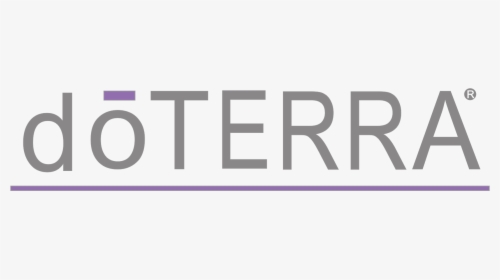 Several clinical and animal studies have shown that bioactive compounds in cinnamon either as whole cinnamon or cinnamon extract affect blood glucose and insulin signaling. However, the molecular mechanistic understanding of the effect of bioactive compounds in cinnamon extracts such as cinnamon bark oil, individually and in combination are not fully elucidated. In this study, a systematic literature review is conducted to identify the molecular pathways affecting glucose metabolism. The molecular pathways of glucose metabolism are converted to individual mathematical models, each model is validated, and the plurality of models are integrated with the CytoSolve® computational systems biology platform to produce an integrative model of glucose metabolism. CytoSolve provides for the dynamic integration of molecular pathway models in silico (through mathematical modeling on a computer), to understand synergistic effects of multi-ingredient natural products on molecular pathways of biological processes. Combination of all the bioactive molecules at the recommended dose levels in cinnamon bark oil is tested in silico. The results from the systematic review reveal three major biological systems that govern glucose metabolism: 1) Glut-4 translocation; 2) Inflammation; and, 3) Glucose conversion by α-Glucosidase. The results from the CytoSolve in silico modeling demonstrate that cinnamon bark oil bioactive compounds synergistically enhance glucose metabolism by increasing Glut-4 translocation, reducing inflammation, and inhibiting glucose conversion by α-Glucosidase.
Several clinical and animal studies have shown that bioactive compounds in cinnamon either as whole cinnamon or cinnamon extract affect blood glucose and insulin signaling. However, the molecular mechanistic understanding of the effect of bioactive compounds in cinnamon extracts such as cinnamon bark oil, individually and in combination are not fully elucidated. In this study, a systematic literature review is conducted to identify the molecular pathways affecting glucose metabolism. The molecular pathways of glucose metabolism are converted to individual mathematical models, each model is validated, and the plurality of models are integrated with the CytoSolve® computational systems biology platform to produce an integrative model of glucose metabolism. CytoSolve provides for the dynamic integration of molecular pathway models in silico (through mathematical modeling on a computer), to understand synergistic effects of multi-ingredient natural products on molecular pathways of biological processes. Combination of all the bioactive molecules at the recommended dose levels in cinnamon bark oil is tested in silico. The results from the systematic review reveal three major biological systems that govern glucose metabolism: 1) Glut-4 translocation; 2) Inflammation; and, 3) Glucose conversion by α-Glucosidase. The results from the CytoSolve in silico modeling demonstrate that cinnamon bark oil bioactive compounds synergistically enhance glucose metabolism by increasing Glut-4 translocation, reducing inflammation, and inhibiting glucose conversion by α-Glucosidase.
CYTOSOLVE CASE STUDY: Nu Skin
 Headache, joint pain and muscle soreness are some of the most common age-associated inflictions. A formulation was analyzed to determine the efficacy of individual and combination of five (5) ingredients on reducing headache, joint pain and muscle soreness at the molecular level. In this study, a systematic literature review is conducted to identify the molecular pathways affecting headache, joint pain and muscle soreness. The molecular pathways of headache, joint pain and muscle soreness are converted to individual mathematical models; each model is validated; and, the plurality of models is integrated with the CytoSolve® computational systems biology platform to produce an integrative model of headache, joint pain and muscle soreness, respectively. Five individual ingredients from formulation are tested in silico using the CytoSolve model to evaluate efficacy. Combination of the five ingredients, from the current dosage in the formulation, is also tested in silico. The results from the systematic review revealed mechanisms of action for each of three indications as discussed below.
Headache, joint pain and muscle soreness are some of the most common age-associated inflictions. A formulation was analyzed to determine the efficacy of individual and combination of five (5) ingredients on reducing headache, joint pain and muscle soreness at the molecular level. In this study, a systematic literature review is conducted to identify the molecular pathways affecting headache, joint pain and muscle soreness. The molecular pathways of headache, joint pain and muscle soreness are converted to individual mathematical models; each model is validated; and, the plurality of models is integrated with the CytoSolve® computational systems biology platform to produce an integrative model of headache, joint pain and muscle soreness, respectively. Five individual ingredients from formulation are tested in silico using the CytoSolve model to evaluate efficacy. Combination of the five ingredients, from the current dosage in the formulation, is also tested in silico. The results from the systematic review revealed mechanisms of action for each of three indications as discussed below.
For headache, the molecular pathways included: 1) Arachidonic acid pathway; 2) Bradykinin induced TRPV1 phosphorylation pathway; and, 3) Substance P release pathway. For Joint pain, the molecular pathways included: 1) Arachidonic acid pathway; and 2) Bradykinin induced COX-2 production pathway. For Muscle soreness, the molecular pathways included: 1) Arachidonic acid pathway; 2) Bradykinin induced PKC activation pathway; and, 3) Oxidative stress pathway.
The combination of five ingredients was not effective on all three indications. Our results suggested different combinations for each of the indications.
CYTOSOLVE CASE STUDY: Ridgecrest Herbals
 Lung congestion is a result of an excess of blood in specific parts of lungs due to obstruction of venous return and generally occurs when mucous membranes become inflamed and irritated resulting in excessive mucus production that blocks different airways in the body and makes fluid stagnant. RidgeCrest Herbals’ ClearLungs® has been shown to help the body maintain favorable respiratory health and sustain a normal, healthy respiratory system by combining the traditionally-known properties of thirteen Chinese herbs. In this study, a systematic literature review is conducted to identify the molecular pathways affecting lung congestion. The molecular pathways of lung congestion are converted to individual mathematical models, each model is validated, and the plurality of models are integrated with the CytoSolve® computational systems biology platform to produce an integrative model of lung congestion. Combination of all the bioactive molecules at the recommended dose levels in RidgeCrest Herbals’ ClearLungs® is tested in silico. The results from the systematic review reveal three major biological systems that govern lung congestion: 1) Inflammation; 2) Mucus Homeostasis; and, 3) Smooth Muscle Cell Relaxation. The results from the CytoSolve in silico modeling demonstrate that ClearLungs ingredients synergistically alleviate Lung Congestion by reducing inflammation, lowering mucin production and increasing smooth muscle cell relaxation.
Lung congestion is a result of an excess of blood in specific parts of lungs due to obstruction of venous return and generally occurs when mucous membranes become inflamed and irritated resulting in excessive mucus production that blocks different airways in the body and makes fluid stagnant. RidgeCrest Herbals’ ClearLungs® has been shown to help the body maintain favorable respiratory health and sustain a normal, healthy respiratory system by combining the traditionally-known properties of thirteen Chinese herbs. In this study, a systematic literature review is conducted to identify the molecular pathways affecting lung congestion. The molecular pathways of lung congestion are converted to individual mathematical models, each model is validated, and the plurality of models are integrated with the CytoSolve® computational systems biology platform to produce an integrative model of lung congestion. Combination of all the bioactive molecules at the recommended dose levels in RidgeCrest Herbals’ ClearLungs® is tested in silico. The results from the systematic review reveal three major biological systems that govern lung congestion: 1) Inflammation; 2) Mucus Homeostasis; and, 3) Smooth Muscle Cell Relaxation. The results from the CytoSolve in silico modeling demonstrate that ClearLungs ingredients synergistically alleviate Lung Congestion by reducing inflammation, lowering mucin production and increasing smooth muscle cell relaxation.
CYTOSOLVE CASE STUDY: Juice Plus+ Science Institute
 Low-grade chronic inflammation (LGCI) is defined by the persistent presence of elevated levels of circulating cytokines such as interleukin-6 (IL-6), tumor necrosis factor-alpha (TNFα), and interleukin-1 beta (IL-1β) that promote disease progression. LGCI drives the pathogenesis of osteoarthritis by accelerating catabolic responses in chondrocytes, inflammation of the synovial membrane, and promoting pain in the joint An integrative in silico – computational model – of LGCI is developed to predict the effect of phytonutrients in the FBV juice powder on four biomarkers of LGCI, namely, TNF-a, CCL2, IL-1β, and ROS. Eight phytonutrients in the FBV juice powder are identified whose synergistic combination lowers all four biomarkers of LGCI, which is corroborated by clinical observations. All eight phytonutrients – luteolin, lycopene, vitamin A, vitamin E, vitamin C, epicatechin, EGCG, and quercetin – lower TNF-a, CCL2, and IL-1β, whereas only six of them – lycopene, vitamin A, vitamin E, vitamin C, epicatechin, and EGCG were efficient in lowering ROS.The molecular systems architecture of LGCI developed from this effort offers systems understanding of complex molecular interactions occurring during a biological process or a disease such as LGCI. This architecture provides a mechanistic understanding of anti-inflammatory effects of bioactive compounds in FBV juice powder that may improve LGCI.
Low-grade chronic inflammation (LGCI) is defined by the persistent presence of elevated levels of circulating cytokines such as interleukin-6 (IL-6), tumor necrosis factor-alpha (TNFα), and interleukin-1 beta (IL-1β) that promote disease progression. LGCI drives the pathogenesis of osteoarthritis by accelerating catabolic responses in chondrocytes, inflammation of the synovial membrane, and promoting pain in the joint An integrative in silico – computational model – of LGCI is developed to predict the effect of phytonutrients in the FBV juice powder on four biomarkers of LGCI, namely, TNF-a, CCL2, IL-1β, and ROS. Eight phytonutrients in the FBV juice powder are identified whose synergistic combination lowers all four biomarkers of LGCI, which is corroborated by clinical observations. All eight phytonutrients – luteolin, lycopene, vitamin A, vitamin E, vitamin C, epicatechin, EGCG, and quercetin – lower TNF-a, CCL2, and IL-1β, whereas only six of them – lycopene, vitamin A, vitamin E, vitamin C, epicatechin, and EGCG were efficient in lowering ROS.The molecular systems architecture of LGCI developed from this effort offers systems understanding of complex molecular interactions occurring during a biological process or a disease such as LGCI. This architecture provides a mechanistic understanding of anti-inflammatory effects of bioactive compounds in FBV juice powder that may improve LGCI.
 Low-grade chronic inflammation (LGCI) is defined by the persistent presence of elevated levels of circulating cytokines such as interleukin-6 (IL-6), tumor necrosis factor-alpha (TNFα), and interleukin-1 beta (IL-1β) that promote disease progression. LGCI drives the pathogenesis of osteoarthritis by accelerating catabolic responses in chondrocytes, inflammation of the synovial membrane, and promoting pain in the joint An integrative in silico – computational model – of LGCI is developed to predict the effect of phytonutrients in the FBV juice powder on four biomarkers of LGCI, namely, TNF-a, CCL2, IL-1β, and ROS. Eight phytonutrients in the FBV juice powder are identified whose synergistic combination lowers all four biomarkers of LGCI, which is corroborated by clinical observations. All eight phytonutrients – luteolin, lycopene, vitamin A, vitamin E, vitamin C, epicatechin, EGCG, and quercetin – lower TNF-a, CCL2, and IL-1β, whereas only six of them – lycopene, vitamin A, vitamin E, vitamin C, epicatechin, and EGCG were efficient in lowering ROS.The molecular systems architecture of LGCI developed from this effort offers systems understanding of complex molecular interactions occurring during a biological process or a disease such as LGCI. This architecture provides a mechanistic understanding of anti-inflammatory effects of bioactive compounds in FBV juice powder that may improve LGCI.
Low-grade chronic inflammation (LGCI) is defined by the persistent presence of elevated levels of circulating cytokines such as interleukin-6 (IL-6), tumor necrosis factor-alpha (TNFα), and interleukin-1 beta (IL-1β) that promote disease progression. LGCI drives the pathogenesis of osteoarthritis by accelerating catabolic responses in chondrocytes, inflammation of the synovial membrane, and promoting pain in the joint An integrative in silico – computational model – of LGCI is developed to predict the effect of phytonutrients in the FBV juice powder on four biomarkers of LGCI, namely, TNF-a, CCL2, IL-1β, and ROS. Eight phytonutrients in the FBV juice powder are identified whose synergistic combination lowers all four biomarkers of LGCI, which is corroborated by clinical observations. All eight phytonutrients – luteolin, lycopene, vitamin A, vitamin E, vitamin C, epicatechin, EGCG, and quercetin – lower TNF-a, CCL2, and IL-1β, whereas only six of them – lycopene, vitamin A, vitamin E, vitamin C, epicatechin, and EGCG were efficient in lowering ROS.The molecular systems architecture of LGCI developed from this effort offers systems understanding of complex molecular interactions occurring during a biological process or a disease such as LGCI. This architecture provides a mechanistic understanding of anti-inflammatory effects of bioactive compounds in FBV juice powder that may improve LGCI.
CYTOSOLVE CASE STUDY: The Natural Vet – REDOXX®

The Natural Vet’s REDOXX® formulation has been shown to help horses, dogs, and cats improve immune system, lower anxiety, and increase energy. In this study, a systematic literature review is conducted to identify the molecular pathways affecting immune health, anxiety and energy metabolism. These molecular pathways are converted to individual mathematical models, each model is validated, and the plurality of models are integrated with the CytoSolve® computational systems biology platform to produce an integrative model of immune health, anxiety, and energy metabolism.
The results from the systematic review revealed three major biological systems that govern anxiety: 1) Endocannabinoid Synthesis; 2) NMDAR Signaling; and, 3) Oxidative Stress. The results from the CytoSolve in silico modeling demonstrate that REDOXX ingredients synergistically alleviate anxiety by increasing endocannabinoids, downregulating NMDAR singaning, and dowregulating oxidative stress.
CytoSolve’s systematic review revealed two major biological systems involved in immune function: 1) TLR-4 signaling pathway; and, 2) IL-6 signaling pathway. REDOXX ingredients synergistically improved immune function by downregulating TLR-4 signaling pathway and downregulating IL-6 signaling pathway.
The results from the systematic review revealed three major biological systems that govern energy metabolism: 1) Glycolysis pathway; and, 2) TCA Cycle. The results from the CytoSolve in silico modeling demonstrate that REDOXX ingredients synergistically improve energy metabolism by upregulating both glycolysis and TCA cycle.
CYTOSOLVE CASE STUDY: The Natural Vet – Bug Check®

The Natural Vet®’s Bug Check® has been shown to help improve pest repellent action in mammals including equine, canine, feline, sheep and bovine. However, the molecular mechanistic understanding of the effect of bioactive compounds in Bug Check, individually and in combination, on pest repellent action needs further elucidation. In this study, a systematic literature review is conducted to identify the molecular pathways affecting pet repellent action. These molecular pathways are converted to individual mathematical models, each model is validated, and the plurality of models are integrated with the CytoSolve® computational systems biology platform to produce an integrative model of pet repellent action. The results from the systematic review reveal three major biological systems that govern pest repellent action: 1) Oxidative Stress; 2) Transglutaminase Synthesis Pathway; and, 3) Lactic Acid Synthesis pathway. The results from the CytoSolve in silico modeling demonstrate that Bug Check ingredients synergistically alleviate pest repellent action by increasing transglutaminase, downregulating lactic acid production, and downregulating oxidative stress.
CYTOSOLVE CASE STUDY: APEX HHPLO

Since it is a small molecule, molecular hydrogen can easily dissipate throughout the body and cells. It can permeate into bio-membranes, the cytosol, mitochondria and nuclei. Molecular hydrogen products are promoted as having anti-apoptotic, antioxidant, anti-inflammatory, and anti-allergy effects. In this study, CytoSolve® platform was used to understand the efficacy of molecular hydrogen on inflammatory pain. CytoSolve analysis identified three major biomolecular pathways governing inflammatory pain that are affected by molecular hydrogen: 1) COX-2 Production Pathway; 2) Arachidonic Acid Metabolism Pathway; 3) PGE2-Induced TRPV1 and CGRP Synthesis Pathway. These molecular pathways are converted to individual mathematical models, each model is validated, and the plurality of models are integrated with the CytoSolve® computational systems biology platform to produce an integrative model of inflammatory pain. The results from CytoSolve in silico analysis predicted that molecular hydrogen downregulates COX-2, lowers PGE2, and reduces both TRPV1 and CGRP – indicating therapeutic reduction of inflammatory pain by molecular hydrogen.
CYTOSOLVE CASE STUDY: City of Hope

Green tea (Camellia sinensis) has bioactive compounds that have been shown to possess nutritive effects on various biomolecular processes such as immunomodulation. This research explores the immunomodulatory effects of green tea in reducing transplant rejection. The study employs computational systems biology: 1) to identify biomolecular mechanisms of immunomodulation in transplant rejection; 2) to identify the bioactive compounds of green tea and their specific effects on mechanisms of immunomodulation in transplant rejection; and, 3) to predict the quantitative effects of those bioactive compounds on immunomodulation in transplant rejection. Three bioactive compounds of green tea – epicatechin (EC), gallic acid (GA), and epigallocatechin gallate (EGCG), were identified for their potential effects on immunomodulation of transplant rejection. Of the three, EGCG was the only one determined to enhance anti-inflammatory activity by: 1) upregulating synthesis of HO-1 that is known to promote Treg and Th2 phenotypes associated with enabling transplant tolerance; and, 2) downregulating pro-inflammatory cytokines IL-2, IL-17, IFN-γ, TNF-α, NO, IL-6, and IL-1β that are known to promote Th1 and Th17 phenotypes associated with transplant rejection. To the best of our knowledge, this study provides the first molecular mechanistic understanding of the clinical nutritive value of green tea, specifically the bioactive compound EGCG, in enabling transplant tolerance.
Efficacy Analysis of Functional Foods
The nutritive value of foods is defined by the type and proportion of bioactive compounds present. Commonly found classes of bioactive compounds in foods include polyphenols, flavanoids, saponins, carotenoids, anthocyanins, vitamins, essential oils and enzymes. Optimum conditions are necessary for these compounds to exhibit their numerous health benefits. Analysis of the composition, thermal stability and pH stability of active compounds in foods enables the study of the effects of processing steps on their functional efficacy.
CYTOSOLVE CASE STUDY: Two Moms
 Generally foods undergo different processing steps to stop or deteriorate chemical or biochemical reactions; eliminate infestation of food with microbes, insects or other vermins; and to increase storage stability. Nuts or seeds are generally roasted to be freed from microorganisms and for long term preservation. TMITR has consulted CytoSolve to identify the health benefits of foods with different processing steps like germination and roasting. Systematic literature review are executed to identify the composition of active ingredients from almonds, sunflower seeds, and oat groats. Detailed composition of nutraceutical of different varieties and species from different geographical locations are documented. CytoSolve research methodology is used to uncover the comparative differences between raw, germinated and roasted food. The systematic analysis of active ingredients from nutraceutical also evaluate the risk factors and health benefits for the consumption of processed foods.
Generally foods undergo different processing steps to stop or deteriorate chemical or biochemical reactions; eliminate infestation of food with microbes, insects or other vermins; and to increase storage stability. Nuts or seeds are generally roasted to be freed from microorganisms and for long term preservation. TMITR has consulted CytoSolve to identify the health benefits of foods with different processing steps like germination and roasting. Systematic literature review are executed to identify the composition of active ingredients from almonds, sunflower seeds, and oat groats. Detailed composition of nutraceutical of different varieties and species from different geographical locations are documented. CytoSolve research methodology is used to uncover the comparative differences between raw, germinated and roasted food. The systematic analysis of active ingredients from nutraceutical also evaluate the risk factors and health benefits for the consumption of processed foods.
CYTOSOLVE CASE STUDY: Hail Merry
 More and more people are incorporating what they believe to be raw foods into their diets principally for health and taste reasons. But there is debate and confusion over what actually constitutes “raw” and what the characteristics should be to maintain a food’s ‘raw’ quality at point of sale and also protect consumers from foodborne diseases. International Center for Integrative Systems has developed a standard that aims to verify the claims and support the growth of the raw food community while enabling transparency for consumers, retailers, manufacturers and the regulatory community. Towards the certification of raw products manufactured by Hail Merry, the list of names and weight percentage of all ingredients in each product, and the processing performed for each product were acquired from Hail Merry Foods. A systematic literature review was conducted to identify active ingredient molecules from different categories like polyphenols, flavanoids, saponins, carotenoids, anthocyanins, vitamins, essential oils and enzymes. Active ingredients identified are analyzed with their physical, chemical and physiological properties. Using the proprietary Bioavailability model developed by CytoSolve, bioavailability was estimated for each ingredient. The bioavailability score for each product was calculated as a function of bioavailability of all the ingredients and the weight percentage of each ingredient. A score of >80% is required to fulfil the Bioavailability criteria of the Raw Food Standard. The bioavailability analysis was performed on 20 products from Hail Merry Foods.
More and more people are incorporating what they believe to be raw foods into their diets principally for health and taste reasons. But there is debate and confusion over what actually constitutes “raw” and what the characteristics should be to maintain a food’s ‘raw’ quality at point of sale and also protect consumers from foodborne diseases. International Center for Integrative Systems has developed a standard that aims to verify the claims and support the growth of the raw food community while enabling transparency for consumers, retailers, manufacturers and the regulatory community. Towards the certification of raw products manufactured by Hail Merry, the list of names and weight percentage of all ingredients in each product, and the processing performed for each product were acquired from Hail Merry Foods. A systematic literature review was conducted to identify active ingredient molecules from different categories like polyphenols, flavanoids, saponins, carotenoids, anthocyanins, vitamins, essential oils and enzymes. Active ingredients identified are analyzed with their physical, chemical and physiological properties. Using the proprietary Bioavailability model developed by CytoSolve, bioavailability was estimated for each ingredient. The bioavailability score for each product was calculated as a function of bioavailability of all the ingredients and the weight percentage of each ingredient. A score of >80% is required to fulfil the Bioavailability criteria of the Raw Food Standard. The bioavailability analysis was performed on 20 products from Hail Merry Foods.
CYTOSOLVE CASE STUDY: Brad’s Raw Foods
 More and more people are incorporating what they believe to be raw foods into their diets principally for health and taste reasons. But there is debate and confusion over what actually constitutes ‘raw’ and what the characteristics should be to maintain a food’s ‘raw’ quality at point of sale and also protect consumers from foodborne diseases. International Center for Integrative Systems has developed a standard that aims to verify the claims and support the growth of the raw food community while enabling transparency for consumers, retailers, manufacturers and the regulatory community. Towards the certification of raw products manufactured by Brad’s Raw Foods, the list of names and weight percentage of all ingredients in each product, and the processing performed for each product were acquired from Brad’s Raw Foods. A systematic literature review was conducted to identify top 3-5 active ingredient molecules representing the significant micronutrients were identified along with their physical, chemical and physiological properties. Using the proprietary Bioavailability model developed by CytoSolve, bioavailability was estimated for each ingredient. The bioavailability score for each product was calculated as a function of bioavailability of all the ingredients and the weight percentage of each ingredient. A score of >80% is required to fulfil the Bioavailability criteria of the Raw Food Standard. The bioavailabilty analysis was performed on 13 products from Brad’s Raw Foods. All of the products score more than 80% (86-100%) and passed the Bioavailability criteria.
More and more people are incorporating what they believe to be raw foods into their diets principally for health and taste reasons. But there is debate and confusion over what actually constitutes ‘raw’ and what the characteristics should be to maintain a food’s ‘raw’ quality at point of sale and also protect consumers from foodborne diseases. International Center for Integrative Systems has developed a standard that aims to verify the claims and support the growth of the raw food community while enabling transparency for consumers, retailers, manufacturers and the regulatory community. Towards the certification of raw products manufactured by Brad’s Raw Foods, the list of names and weight percentage of all ingredients in each product, and the processing performed for each product were acquired from Brad’s Raw Foods. A systematic literature review was conducted to identify top 3-5 active ingredient molecules representing the significant micronutrients were identified along with their physical, chemical and physiological properties. Using the proprietary Bioavailability model developed by CytoSolve, bioavailability was estimated for each ingredient. The bioavailability score for each product was calculated as a function of bioavailability of all the ingredients and the weight percentage of each ingredient. A score of >80% is required to fulfil the Bioavailability criteria of the Raw Food Standard. The bioavailabilty analysis was performed on 13 products from Brad’s Raw Foods. All of the products score more than 80% (86-100%) and passed the Bioavailability criteria.
CYTOSOLVE CASE STUDY: Botanical Innovations
Under standing the complexity of ingredients in food, the effect of processing on the nutritional profile of food and their effect on human diet and human health is non-trivial. Botanical Innovations engaged CytoSolve to understand the nutritional profile of black cumin seed oil and uncover the medicinal benefits of its active compounds on skin health, immune health, brain health, and the gut-brain axis. CytoSolve executed a comprehensive systematic bioinformatics review of nutritional composition of black cumin seed oil. This review included analysis of 215 scientific studies, performed by 267 researchers, within 89 institutions across the world, spanning 34 years of research. This study identified 62 key molecules that comprise the nutritional profile of black cumin seed and black cumin seed oil. The key nutritional components of black cumin seed oil include: 10 minerals; 23 phytochemicals; and 35 fatty acids. Black cumin seed oil has medicinal effects on 17 different indications. This study identified effects of black cumin seed oil constituents on skin health, immune health, brain health, and gut-brain axis.
standing the complexity of ingredients in food, the effect of processing on the nutritional profile of food and their effect on human diet and human health is non-trivial. Botanical Innovations engaged CytoSolve to understand the nutritional profile of black cumin seed oil and uncover the medicinal benefits of its active compounds on skin health, immune health, brain health, and the gut-brain axis. CytoSolve executed a comprehensive systematic bioinformatics review of nutritional composition of black cumin seed oil. This review included analysis of 215 scientific studies, performed by 267 researchers, within 89 institutions across the world, spanning 34 years of research. This study identified 62 key molecules that comprise the nutritional profile of black cumin seed and black cumin seed oil. The key nutritional components of black cumin seed oil include: 10 minerals; 23 phytochemicals; and 35 fatty acids. Black cumin seed oil has medicinal effects on 17 different indications. This study identified effects of black cumin seed oil constituents on skin health, immune health, brain health, and gut-brain axis.
Discovery of New Product Formulations
The CytoSolve platform enables product manufacturers such as nutritional supplement companies, cosmeceutical companies, ingredient suppliers, functional food companies etc. to gain insights to understand how particular ingredients and/or single molecules act upon a particular indication or molecular mechanism of action. The detailed insights provide manufacturers and ingredient suppliers a powerful capability to determine how to formulate truly efficacious products and articulate the value of those ingredients and formulations to their customers and consumers.
CYTOSOLVE CASE STUDY: Life Extension
 Life Extension and CytoSolve collaboration resulted in development of three unique products derived from plant-based ingredients to enhance testosterone levels. This collaboration involved three phases: 1) Ingredient Identification; 2) In silico model development; and 3) In silico ingredient testing and dose optimization.
Life Extension and CytoSolve collaboration resulted in development of three unique products derived from plant-based ingredients to enhance testosterone levels. This collaboration involved three phases: 1) Ingredient Identification; 2) In silico model development; and 3) In silico ingredient testing and dose optimization.
In the first phase, CytoSolve platform was employed to identify an Initial list of potential ingredients that could be used in the product formulation. The Initial List was further refined to a Filtered list by application of filtering criteria developed by Life Extension. In the second phase, CytoSolve identified the molecular pathways affecting the levels of testosterone. The molecular pathways of testosterone production were converted to individual mathematical models, each model was validated, and the plurality of models were integrated with the CytoSolve® computational systems biology platform to produce an integrative model of testosterone metabolism. In the third phase, the ingredients from the Filtered List are tested for their efficacy using the integrative model of testosterone metabolism. The most efficacious ingredients are chosen for the dose optimization using CytoSolve Optimizer engine. This step resulted in three formulations of ingredients, which were highly effective in boosting testosterone levels. Currently, clinical studies on these three formulations determine their clinical efficacy in human subjects are in progress.
CYTOSOLVE CASE STUDY: VASHIVA, LLC.

Joint pain is the most prominent and disabling symptom of arthritis. Arthritic pain is associated with inferior functional outcomes and reduced quality of life compared to other chronic conditions. An integrative in silico – computational model – of joint health is developed to predict the effect of phytonutrients on five biomarkers of joint health, namely, PGE-2, TRPV1, CGRP, COX-2 and reactive oxygen species. A formulation of two bioflavonoids was identified, tested, and optimized for its efficacy on the biomarkers of joint health. The results from the CytoSolve in silico modeling demonstrate that ingredients in this formulation synergistically alleviate joint pain by lowering PGE-2, TRPV1, CGRP, COX-2 and reactive oxygen species. The formulation is currently marketed under the brand name mV25.
Toxicity Analysis of Supplements
Diverse responses of target or biomarker induced toxicity through different signaling pathways are identified through systematic literature review. Computational models are constructed to identify the impact of each drug or ingredients on susceptible target or biomarker. CytoSolve platform evaluates the paradox effect of drugs or ingredients in combination. Dose of either drug and/or ingredients in combinations are tested to identify the threshold dose.
CYTOSOLVE CASE STUDY: Safety Testing for United States Pharmacopeia
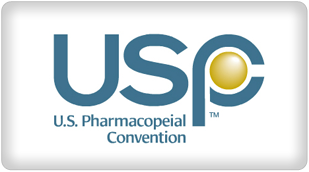 Use of dietary supplements by military personnel is well acknowledged and documented in a review conducted by the Institute of Medicine. About half of the US population uses dietary supplements. Concerns regarding the benefits and safety of dietary supplement use by military arise because (a) military personnel may have a different intent than the general population and (b) military personnel have unique challenges and needs. CytoSolve® computational systems biology platform provides for the dynamic integration of molecular pathway models, in silico, to understand synergistic effects of multi-ingredient dietary supplements on molecular pathways of biological processes. CytoSolve platform was used to evaluate the effect of combinations of arginine and caffeine, found in dietary supplements taken by military personnel, on nitric oxide production, which is directly related to cardiovascular health. The CytoSolve analysis revealed that arginine alone increased the nitric oxide concentration whereas caffeine alone reduced the nitric oxide concentration in healthy individuals. In combination, the results indicated that production rate in healthy individuals did not increase significantly by arginine supplementation. On the other hand, arginine supplementation attenuated NO production rate to nearly normal levels in hyperglycemic/hypertensive individuals.
Use of dietary supplements by military personnel is well acknowledged and documented in a review conducted by the Institute of Medicine. About half of the US population uses dietary supplements. Concerns regarding the benefits and safety of dietary supplement use by military arise because (a) military personnel may have a different intent than the general population and (b) military personnel have unique challenges and needs. CytoSolve® computational systems biology platform provides for the dynamic integration of molecular pathway models, in silico, to understand synergistic effects of multi-ingredient dietary supplements on molecular pathways of biological processes. CytoSolve platform was used to evaluate the effect of combinations of arginine and caffeine, found in dietary supplements taken by military personnel, on nitric oxide production, which is directly related to cardiovascular health. The CytoSolve analysis revealed that arginine alone increased the nitric oxide concentration whereas caffeine alone reduced the nitric oxide concentration in healthy individuals. In combination, the results indicated that production rate in healthy individuals did not increase significantly by arginine supplementation. On the other hand, arginine supplementation attenuated NO production rate to nearly normal levels in hyperglycemic/hypertensive individuals.
Disease Modeling
From the systems biology perspective, living organisms can be viewed as being comprised of dynamic networks of biochemical reactions. The origin of disease is characterized by the disruption of one or more signaling cascades, which may arise due to defects at the molecular level. These events ultimately result in the symptomatic manifestation of disease, due to disturbances in usual functions of the cascades involved. Computational modeling of molecular pathways acts as a backbone for the development of disease models. To functionalize computational models as a disease model, one or more signaling molecules function are altered. In complex diseases, there are numerous cells involving different cascades. In such case, an integrative modeling approach assisted by the CytoSolve platform, sheds more light on the effects of the dysfunction mediated by molecular pathways. This could potentially lead to the identification of new biomarkers, targets, and ultimately, therapeutics with beneficial effects in an overall sense rather than those arising from targeting a single molecule.
CYTOSOLVE CASE STUDY: FDA
 Pancreatic adenocarcinoma is an aggressive cancer, which develops without prominent symptoms. The intense knowledge on cellular and molecular mechanisms of pancreatic adenocarcinoma is required for early detection strategies, preventive measures, and effective interventions. Single therapeutic drug like gemcitabine, approved by FDA against pancreatic cancer is required at higher dose to show minimal effect with higher toxicity. Hence, recent research have focussed on identifying the combination of drugs with maximum effect on minimal dose against cancer. Minimum of 10 to 15 years of research is required, to identify a combination of two effective drugs against cancer. Thus, in order to gain mechanistic insights of drug combinations, mathematical models of EGFR (growth factor) induced cell cycle and apoptosis were constructed to represent the overall framework of pancreatic cancer. CytoSolve created Cyto-001, an in silico combination of two FDA-approved chemotherapeutic agents to measure the number of apoptotic cells minimizing cancer cell proliferation. Novel combination of two drugs – Cyto-001 for pancreatic cancer are approved by FDA for further clinical trials.
Pancreatic adenocarcinoma is an aggressive cancer, which develops without prominent symptoms. The intense knowledge on cellular and molecular mechanisms of pancreatic adenocarcinoma is required for early detection strategies, preventive measures, and effective interventions. Single therapeutic drug like gemcitabine, approved by FDA against pancreatic cancer is required at higher dose to show minimal effect with higher toxicity. Hence, recent research have focussed on identifying the combination of drugs with maximum effect on minimal dose against cancer. Minimum of 10 to 15 years of research is required, to identify a combination of two effective drugs against cancer. Thus, in order to gain mechanistic insights of drug combinations, mathematical models of EGFR (growth factor) induced cell cycle and apoptosis were constructed to represent the overall framework of pancreatic cancer. CytoSolve created Cyto-001, an in silico combination of two FDA-approved chemotherapeutic agents to measure the number of apoptotic cells minimizing cancer cell proliferation. Novel combination of two drugs – Cyto-001 for pancreatic cancer are approved by FDA for further clinical trials.
CYTOSOLVE CASE STUDY: Neuro-Myelitis Optica (NMO)
 Guthy-Jackson Charitable Foundation (GJCF), focuses basic research in understanding the pathogenesis of NMO for effective prevention and therapy. NMO, a rare auto-immune disorder targets the spinal cord and optic nerves. It is characterized by the antibody IgG targeting against aquaporin 4, the major water channel in the central nervous system (CNS). The prevalence of NMO in U.S population is estimated to be 1 to 2%. The main obstacles in developing new therapeutics are complexity of human immune system and the different scenario of immune system signaling in other mammals like rats to carry out fundamental research on auto-immune disorders. GJCF proposed a blueprint – the framework of signaling pathways involved in the pathogenesis of NMO to overcome the challenges in therapeutic development. CytoSolve transformed the framework of molecular pathways into in silico models to facilitate the integrative continuum model. CytoSolve employed computational biology approach to model signal transduction pathways between astrocytes, dendritic cells, T-cells, and B-cells. Integration of multi-signaling pathways correlated the role of aquaporin antibodies IgG in inducing the activation of different cytokines like interleukins 2, 4, 8, 10, 13.
Guthy-Jackson Charitable Foundation (GJCF), focuses basic research in understanding the pathogenesis of NMO for effective prevention and therapy. NMO, a rare auto-immune disorder targets the spinal cord and optic nerves. It is characterized by the antibody IgG targeting against aquaporin 4, the major water channel in the central nervous system (CNS). The prevalence of NMO in U.S population is estimated to be 1 to 2%. The main obstacles in developing new therapeutics are complexity of human immune system and the different scenario of immune system signaling in other mammals like rats to carry out fundamental research on auto-immune disorders. GJCF proposed a blueprint – the framework of signaling pathways involved in the pathogenesis of NMO to overcome the challenges in therapeutic development. CytoSolve transformed the framework of molecular pathways into in silico models to facilitate the integrative continuum model. CytoSolve employed computational biology approach to model signal transduction pathways between astrocytes, dendritic cells, T-cells, and B-cells. Integration of multi-signaling pathways correlated the role of aquaporin antibodies IgG in inducing the activation of different cytokines like interleukins 2, 4, 8, 10, 13.
CYTOSOLVE CASE STUDY: Autoimmune Disease (Lupus)
Interferons (IFNs) are a group of proteins with antiviral activity, growth regulatory properties, and a wide variety of immune-modulatory activities. The interferon network is implicated in autoimmune diseases. CytoSolve’s work with The Centers for Therapeutic Innovation (CTI) at Pfizer, Inc. aimed towards building a mechanistic understanding of the role of IFNs in autoimmune diseases such as Lupus, Dermatomyositis, and others. In this project, a core platform using the CytoSolve technology was setup to understand the complexity of IFNs broadly in disease progression, and specifically their role in hematopoietic stem cells and fibroblasts, which are both involved in several autoimmune diseases such as lupus. This CytoSolve infrastructure provides a powerful tool for target discovery, biomarker identification, as well as single and multi-combination therapeutics development for autoimmune diseases such as lupus.
CYTOSOLVE CASE STUDY: EGFR Signaling
 Humans were initially considered to possess a different number of genes when compared to a worm. However, during the human genome project, it was realized that humans have the same number of genes as a worm. Biology now recognizes that we cannot consider the human being to be made of just genes, but factors other than genes decides human physiology and disease conditions. These factors could range anything from thoughts, food or lifestyle, giving rise to a thinking based on systems biology. This sheds light on the concept of ‘wholism’, the basis for traditional Indian systems of medicine such as Siddha and Ayurveda. Creating mathematical model of the cell is an effective way of bringing wholism to Western medicine. This involves performing complex integrations of molecular pathway models, generally considered tedious and time-consuming. Various software systems exist for this purpose, however, the approaches used so far do not provide a scalable method to integrate multiple biological pathways to model the whole cell. Dr. VA Shiva Ayyadurai, during his research time at MIT, developed CytoSolve, a scalable architecture for integrating biological pathways. Its key features include an infrastructure that provides simple communications interface to each model, is distributed, Web-enabled, and automatically aggregates the models to build the integrated model. Dr. Shiva Ayyadurai validated CytoSolve by comparing the integrated results of the EGFR pathway with the monolithic model of EGFR generated by CellDesigner, a popular tool for building computational molecular pathway models. The results demonstrated the viability of the CytoSolve approach, which can now provide a basis for using computational methods to solve challenges in medical research.
Humans were initially considered to possess a different number of genes when compared to a worm. However, during the human genome project, it was realized that humans have the same number of genes as a worm. Biology now recognizes that we cannot consider the human being to be made of just genes, but factors other than genes decides human physiology and disease conditions. These factors could range anything from thoughts, food or lifestyle, giving rise to a thinking based on systems biology. This sheds light on the concept of ‘wholism’, the basis for traditional Indian systems of medicine such as Siddha and Ayurveda. Creating mathematical model of the cell is an effective way of bringing wholism to Western medicine. This involves performing complex integrations of molecular pathway models, generally considered tedious and time-consuming. Various software systems exist for this purpose, however, the approaches used so far do not provide a scalable method to integrate multiple biological pathways to model the whole cell. Dr. VA Shiva Ayyadurai, during his research time at MIT, developed CytoSolve, a scalable architecture for integrating biological pathways. Its key features include an infrastructure that provides simple communications interface to each model, is distributed, Web-enabled, and automatically aggregates the models to build the integrated model. Dr. Shiva Ayyadurai validated CytoSolve by comparing the integrated results of the EGFR pathway with the monolithic model of EGFR generated by CellDesigner, a popular tool for building computational molecular pathway models. The results demonstrated the viability of the CytoSolve approach, which can now provide a basis for using computational methods to solve challenges in medical research.
CYTOSOLVE CASE STUDY: ALS Neuromuscular Junction

In a collaboration with the Biological Engineering Department at Massachusetts Institute of Technology, CytoSolve has developed a molecular systems architecture for the neuromuscular junction to provide a framework for organizing complexity of biomolecular interactions in Amyotrophic Lateral Sclerosis (ALS) at the neuromuscular junction. ALS is a most common motor neuron disease characterized by progressive degeneration of the upper and lower motor neurons that supply voluntary muscles. The neuromuscular junctions contain key cells such as upper and lower neurons, skeletal muscle cells, astrocytes, microglia, Schwann cells, and endothelial cells, which are implicated in pathogenesis of ALS. This molecular systems architecture provides a layered understanding of intra- and inter-cellular interactions in the ALS neuromuscular junction microenvironment. The molecular systems architecture may be utilized for target identification and discovery of single and combination therapeutics and strategies to treat ALS.

CYTOSOLVE CASE STUDY: Neurodegenrative Disease
 Zilkha Neurogenetic Institute from University of Southern California (USC) has focussed their research on pericytes to decipher the mysteries of disease mechanisms that impact brain function. Pericytes are perivascular cells that encase around the endothelial cells of capillaries and venules throughout the body. They serve as vital integrators, coordinators and effectors for multiple signals between endothelial cells and astrocytes that are critical for neuronal functions in health and disease. Abnormalities in pericyte function could be an important target for neurodegeneration and psychiatric disorders. USC collaborates with CytoSolve to understand cellular and molecular interaction of pericytes in regulating endothelial cell structure and blood flow. CytoSolve has transformed molecular signaling pathways of PDGF-BB, TGF-β, and Notch into computational model. Scalability of the CytoSolve® Collaboratory™, allows modular integration of molecular pathway models, to analyze the efficient target in blood brain barrier of brain diseases like alzheimer’s disease. Integration and validation of models could be set as an initiative for developing optimized combinations of therapeutic compounds.
Zilkha Neurogenetic Institute from University of Southern California (USC) has focussed their research on pericytes to decipher the mysteries of disease mechanisms that impact brain function. Pericytes are perivascular cells that encase around the endothelial cells of capillaries and venules throughout the body. They serve as vital integrators, coordinators and effectors for multiple signals between endothelial cells and astrocytes that are critical for neuronal functions in health and disease. Abnormalities in pericyte function could be an important target for neurodegeneration and psychiatric disorders. USC collaborates with CytoSolve to understand cellular and molecular interaction of pericytes in regulating endothelial cell structure and blood flow. CytoSolve has transformed molecular signaling pathways of PDGF-BB, TGF-β, and Notch into computational model. Scalability of the CytoSolve® Collaboratory™, allows modular integration of molecular pathway models, to analyze the efficient target in blood brain barrier of brain diseases like alzheimer’s disease. Integration and validation of models could be set as an initiative for developing optimized combinations of therapeutic compounds.
